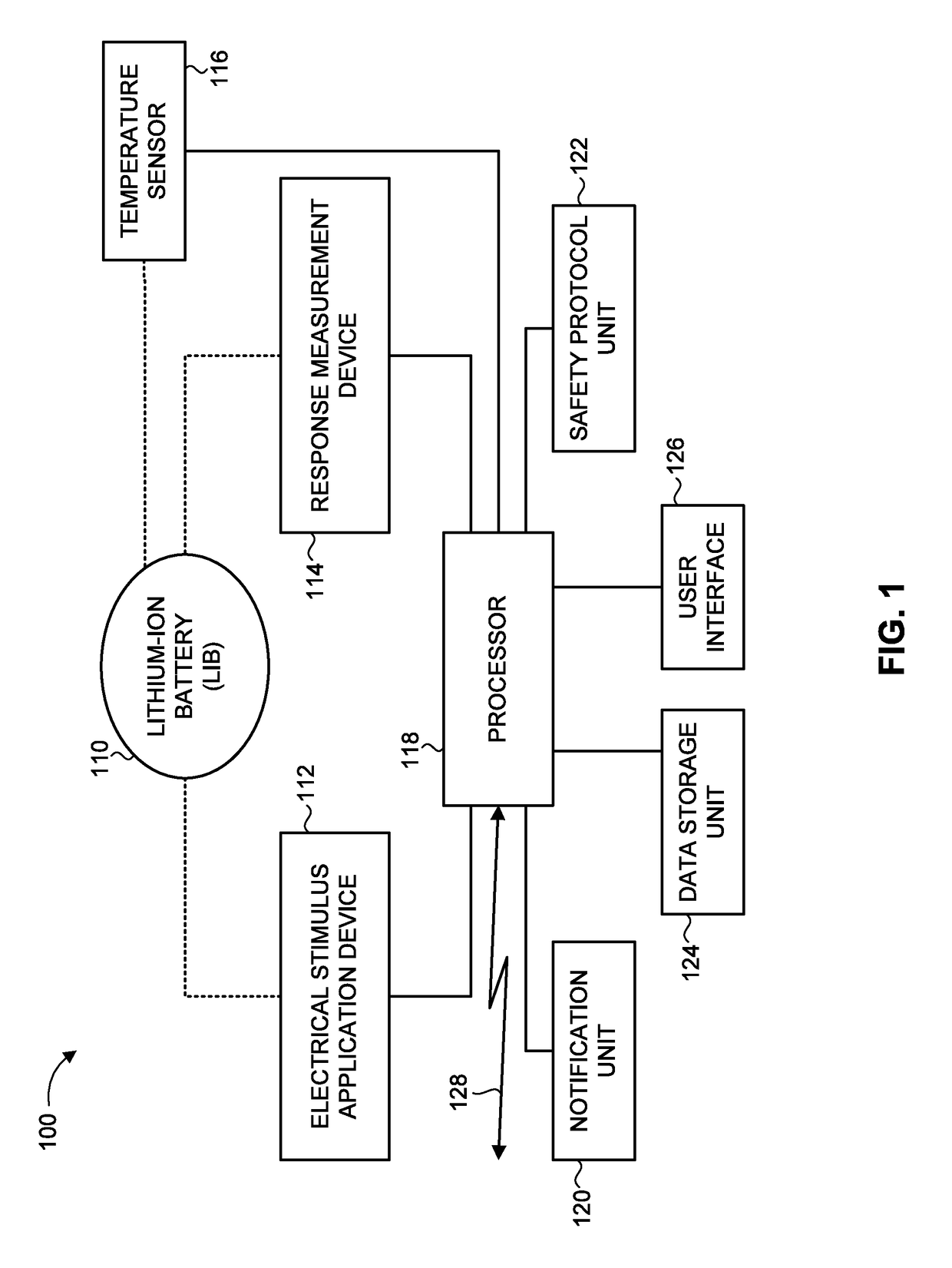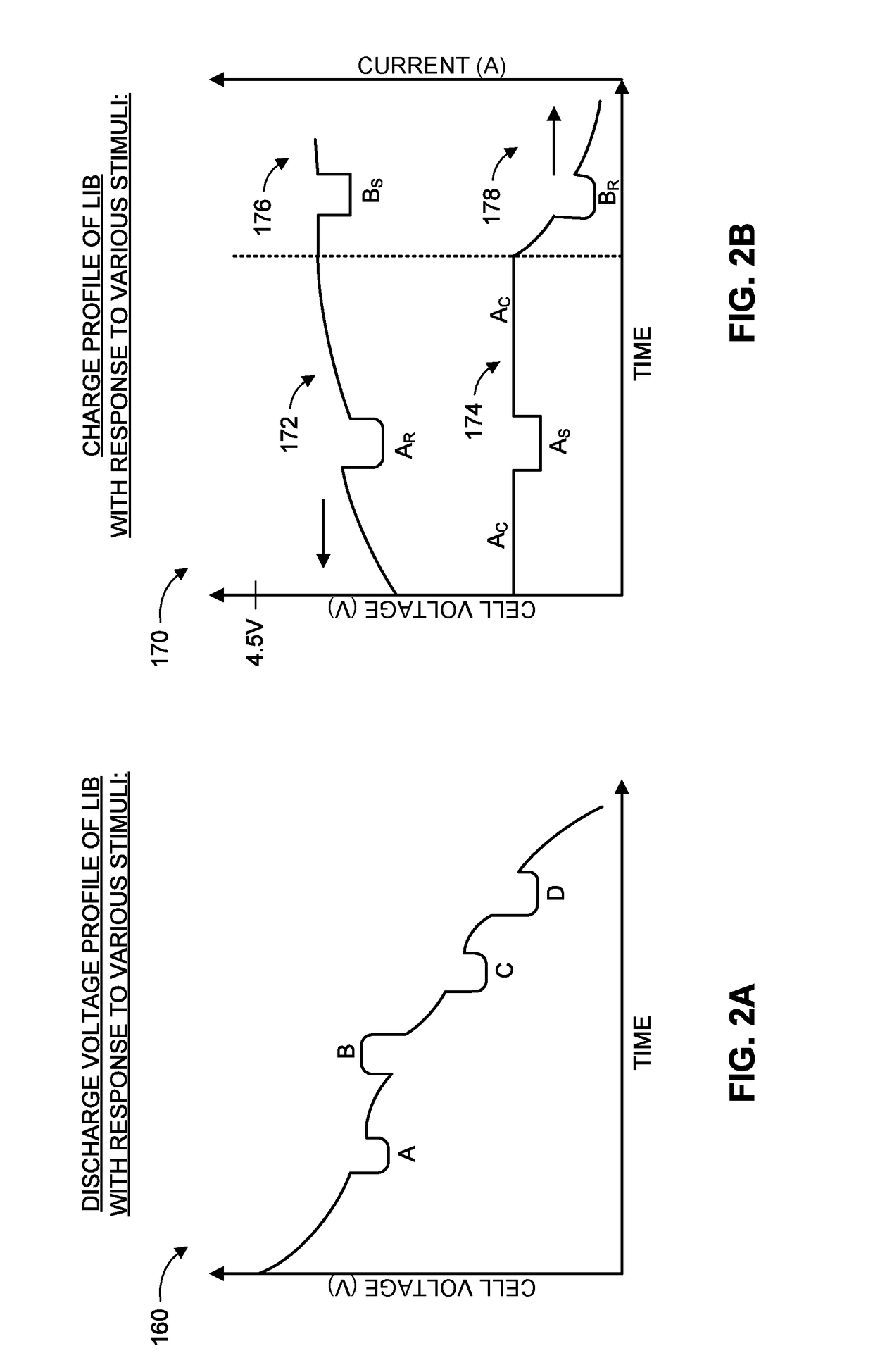However, LIBs also possess a significant shortcoming in that they are occasionally prone to catching fire.
These fires are typically caused by internal short circuits that can develop from an accumulation of latent defects and / or operational defects.
Latent defects may involve the presence of contaminants, or manufacturing deficiencies, such as contact that could develop between the
anode and the
cathode or their respective current collectors.
Operational defects may include, for example: the growth of lithium dendrites caused by
lithium metal plating in the LIB during use (or the lithium plating itself); the growth of
copper dendrites caused by
copper plating (or the
copper plating itself); and
tears or holes formed in the separator due to physical or thermal stresses that create an opportunity for the
anode and
cathode to come into physical contact.
Short circuits in the LIB
cell may also result from degradation and environmental effects, such as physical impacts (e.g., falls or vibrations), large swings in temperature,
impact shocks, and the like.
A short circuit can trigger a
chain reaction in the battery chemicals in the
cell, leading to rapid temperature increase and a consequent buildup of pressure in the
cell, causing it to rupture or combust.
The heat may subsequently
cascade to other battery cells, causing the entire battery to explode or go up in flames.
When a short circuit develops, internal LIB cell temperatures can rise in just a matter of seconds to unsafe levels, thereby inducing
thermal runaway and consequent
combustion.
As LIBs are more reactive and have poorer
thermal stability compared to other types of batteries, they are more susceptible to
thermal runaway in certain conditions such as high temperature operation (e.g., above 80° C.) or overcharging (e.g.,
high rate charge at low temperatures).
The highly exothermic
chain reaction is extremely rapid and can induce
thermal runaway and reach excessive temperatures and pressures (e.g., 700° C. to 1000° C. and about 500 psi) in only a few seconds.
In simplified terms, an initial internally developed fault or defect in a LIB cell can trigger a short circuit, which in turn elicits heating and subsequently exothermic chain reactions, leading to thermal runaway and ultimately
combustion / explosion.
Charging at overly high voltages or low temperatures and / or charging too quickly can lead to the formation of lithium dendrites on the anode, which can elicit short circuiting (by
dendrite penetration of the separator and cathode contact, and / or mechanical stresses of the electrodes).
Conversely, discharging at too low a
voltage can prompt copper
dendrite growth (i.e., where copper is present in the anode
current collector), which can also cause short circuiting.
Cell heating from high environmental temperatures, rapid charging,
high load discharging, and proximity between neighboring cells in a battery
package, are all factors that increase the potential for thermal runaway.
Serious safety hazards are thus posed by a wide range of LIB containing devices and components,
ranging from laptops and cellphones to electric /
hybrid vehicles and aircrafts, with dangerous incidents reported yearly and numerous product recalls.
Combustion of LIB cells may occur even under normal use, without any prior warning, and may have catastrophic implications in some cases.
Consequently, many manufacturers avoid the use of LIBs altogether, leading to, for example, a substantial portion of electric vehicles and
hybrid vehicles nowadays not being powered by LIBs, despite their numerous advantages.
Currently available battery
diagnostic tools are essentially reactive systems which passively detect or monitor particular cell parameters, and may be ineffective (or insufficiently effective) in identifying potential hazards in advance, and thus in preventing the LIB cell from catching fire.
Nevertheless, the reaction time of such reactive regulation systems is generally insufficient to prevent the development of thermal runaway and the inevitable battery
combustion that follows.
In particular, conventional systems typically track only the temperature and cell
operating voltage and current (and sometimes the
AC impedance), all of which only depict changes that become significantly detectable in the late stages of a developing
hazard when it is too late to avert the chain reactions that lead to irreversible thermal runaway and cell combustion.
The complexity and required speed for LIB
safety monitoring increases significantly when a large number of cells are present, such as multiple cells connected in series or parallel (or a combination thereof).
 Login to View More
Login to View More  Login to View More
Login to View More 


